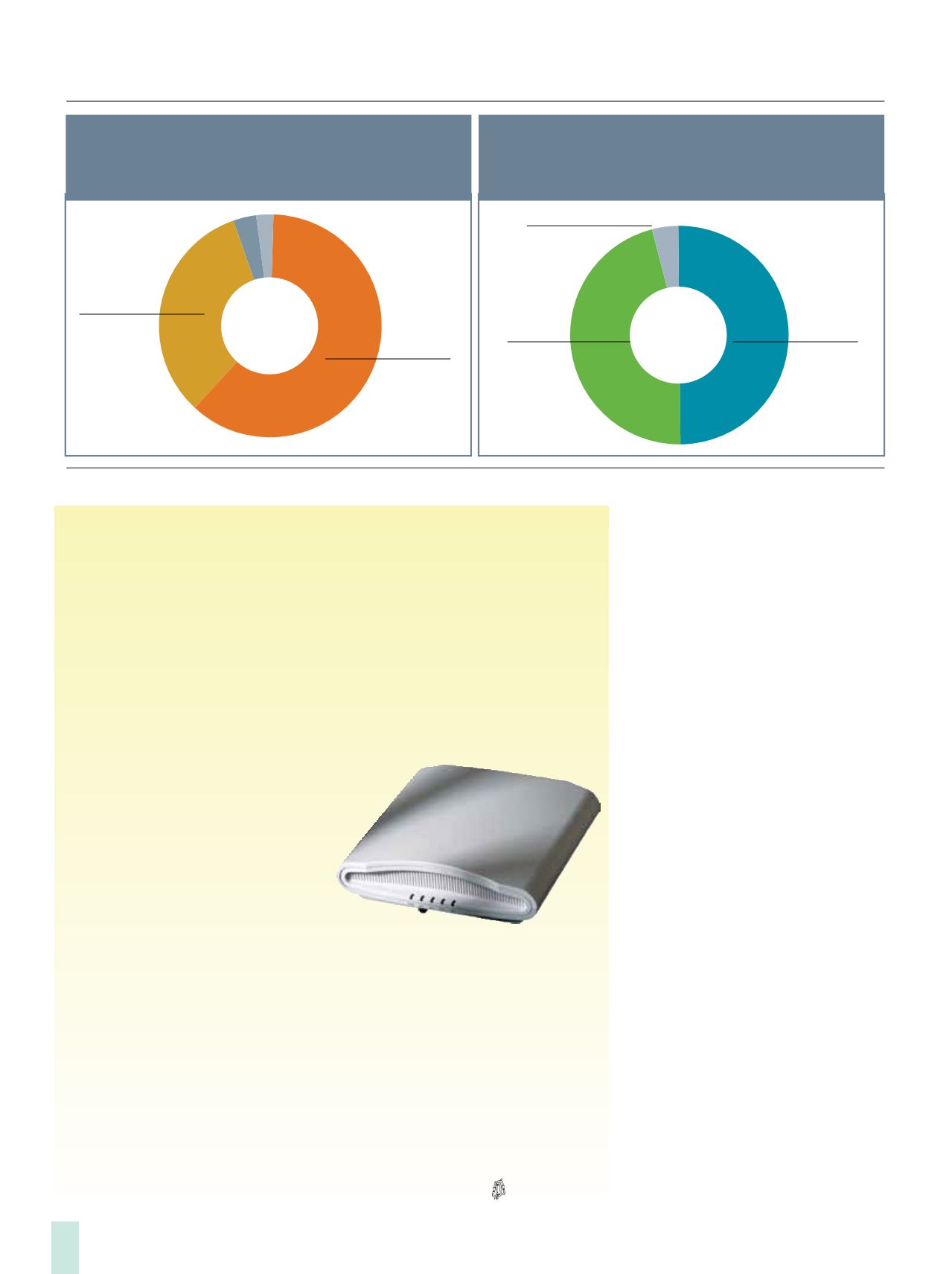

“The conceptual battle between
brick-and-mortar versus online is
dead. All retailers must become omni-
channel and harness the power of
the smartphone by developing next-
generation, personalized experiences.”
By providing a Wi-Fi experience,
retailers put themselves in position to
control the in-store shopper’s digital
experience. That can be done through
a simple landing and log-in page that
shoppers must cross to access the free
connectivity. Here a retailer can push
offers and content or highlight in-store
services that discourage shoppers from
searching competing offers.
“This page is your first opportunity
to present a message to the customer,”
says Baker.
Of course, that is just a beginning.
Analysis of the Wi-Fi and location-
based data also can provide insight into
how, who, when and where shoppers
interact with in-store environments and
merchandising campaigns. What’s more,
“these new technology platforms tend be
inexpensive to deploy when compared
with more traditional measurement
instruments such as traffic-counting
devices and video observations,” note
researchers at the Platt Retail Institute.
Retail’s ROI
Consider, for instance, “what it would
be like to have insight into every one of
your visitor’s Facebook pages?” says
Baker. Powernet’s Beyond Wi-Fi service
Analytics Usage among Stores withWi-Fi
(Retailers and Hospitality)
Source: IHL Group
Which of the following best describes
your average customer’s behavior since
you installedWi-Fi
Source: iGR survey of 400 U.S. small customer-facing businesses
Which of the following best describes
your average customer’s behavior since
you installedWi-Fi
Impacts of In-StoreWi-Fi
Spend
same time
Spend
same
money
0.1%
Don’t
know
Spend
more
money
Spend
more time
32.6%
61.3%
45.9%
50.1%
Traffic counting
Guest Wi-Fi session duration
What devices customers use
Hot spots in store
Loyalty/repeat visits to store
Time in store
Social media conversions
Times of use
Sales conversion by Wi-Fi
Demographics
56%
49%
49%
41%
39%
39%
37%
32%
27%
17%
St
(R
WAN/LAN
WAN Bandwi
Lo
Sou
Getting Started
As the saying goes, “Nothing is free.” So while free guest-host Wi-Fi comes at no cost to
store customers, re ailers know it involves both capital and operational expenditures.
As with most nything, the ultimate costs of deploying a wireless local area network and
providing customers access to it depends on specific variables, including store size, layout
and intended use. Obviously, a small independent specialty store is substantially less to
network than a mega-chain store.
One constant, however, is the need to provide a quality experience. After all, if the Internet
experience is slow or choppy, customers simply won’t use it.
A good experience starts with a business-grade Wi-Fi
access points, a small box similar to the wireless routers
found in a home Wi-Fi network. A sufficiently solid
access point tends to retail for about $1,300. The
good news is, one access point can serve up
to 500 simultaneous users and cover about
4,000 square feet, so one is likely enough
for most outdoor specialty stores. Large
stores may want to budget for two or more.
In addition to access points, deployments also
likely involve network planning and design, cabling
and installation costs. To give some idea (albeit
a much larger example than most retail shops
would need), Powernet recently put together a
Wi-Fi solution for a 22,000-square-foot event center that ran about $11,000 for design,
equipment, installation and a managed Wi-Fi service, just about everything needed,
except the Internet connection.
Brent Baker, manager of network services at Powernet, recommends capacity of
about 500 Kbps per expected user. So if a store can expect peak usage of about 100
simultaneous devices connected to the network (50 Mbps), such as during a Black
Friday sale or in-store event, plus whatever capacity is needed for internal functions and
operations, Internet service requirements can quickly approach 100 Megs of download.
We’ll defer to your local Internet service provider for that monthly costs.
The Ruckus ZoneFlex R710
wireless access points serves up
to 500 devices.
Inside
Outdoor
|
Spring
2016
44
















